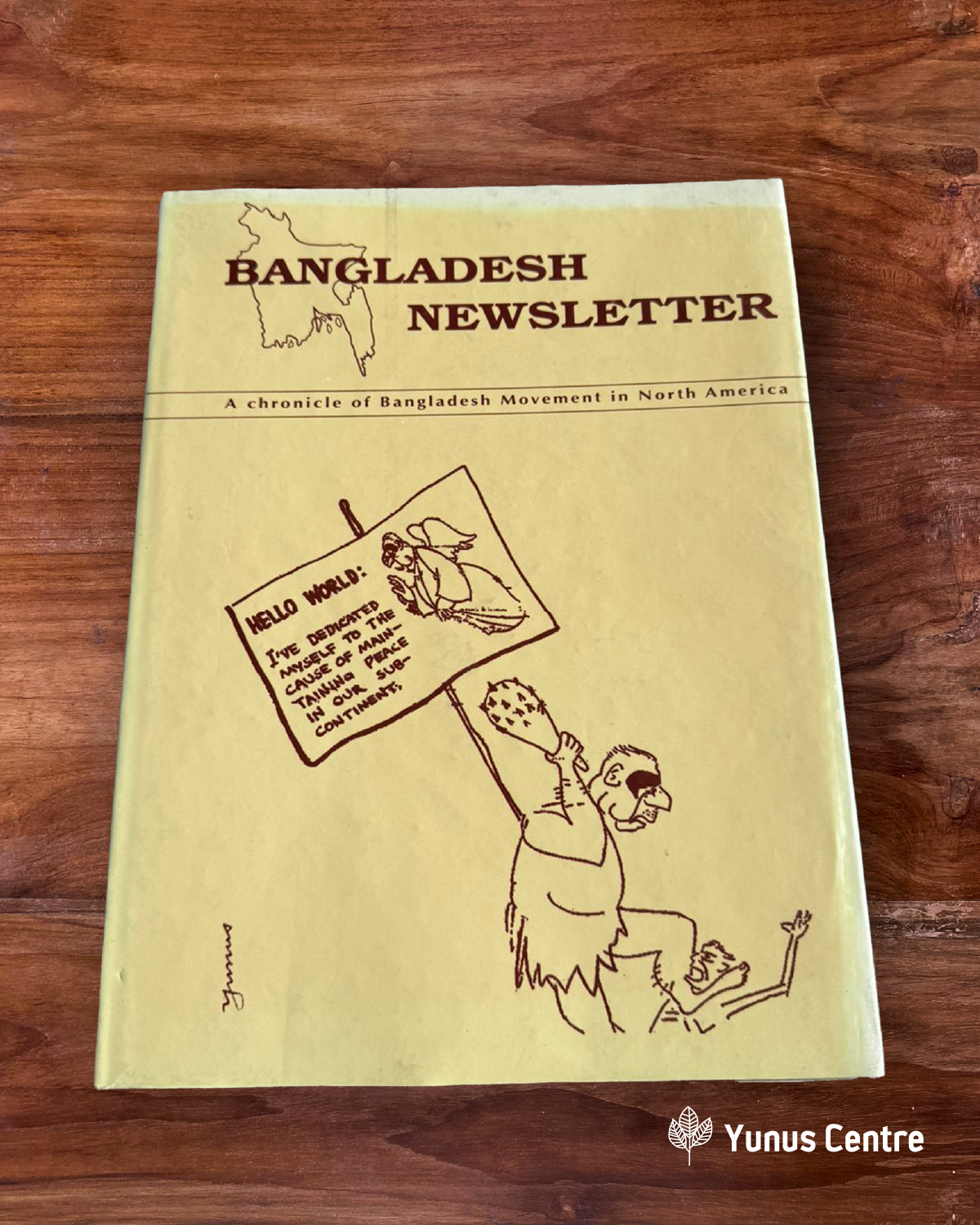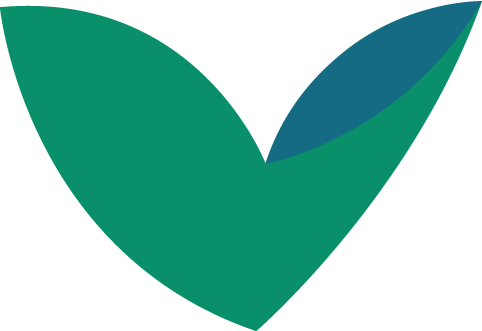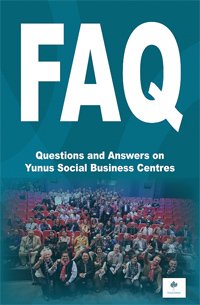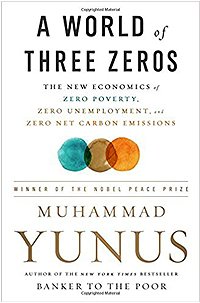Bangladesh Newsletter
Foreword
Thanks to Shamsul Bari for thinking about publishing the Bangladesh Newsletters in a volume. As I look through the pages of these newsletters all those terrible days come back to memory. Agony, despair, and hopelessness competed with the determination of the people and dreams about an independent dignified Bangladesh.
Liberation war brought many of us together overnight. Friendship that emerged remained as a lifelong bond. After Bangladesh gained her independence we moved together to Bangladesh, to participate in the building of a nation that we dreamt about.
Liberation war forged immediate unity among all Bangladeshis. We were never as united as we were during those days. We all shared the same dreams and wanted to work for it to make it come true immediately. Nobody was expecting any personal benefit out of it. It was all for the nation as a whole a nationhood we felt so strongly within us:
These newsletters were not a product of any formal decision. These were born out of a necessity that we felt so deeply to let the world know that Bangladesh was born irrevocably. People of Bangladesh have given birth to it. Nobody can take Bangladesh away from them.
I took over the newsletter from Shamsul Bari not because Shamsul Bari or anybody had asked me to. I did it to keep it going. Bari was too busy running around with the Bangladesh Defense League activities. I was teaching at Middle Tennessee State University (MTSU) at Murfreesboro, Tennessee. Like all Bangladeshis everywhere I was keeping myself busy monitoring the progress of the Liberation War taping all the TV news coverage through the Vanderbilt University special facilities, listening to radio, checking through every single newspaper I could lay my hands on. That I thought will give me an advantage in bringing out the newsletter and widen the support for an independent Bangladesh. As the newsletter was coming out of my apartment it turned into an instant two person editorial office, přinting and distribution centre. My wife Vera was a very committed partner in this undertaking. My apartment gradually took upon an additional role of becoming an information centre for the war. I would receive calls from all over North America from impatient Bangladeshis to know why it is taking so long. What can they do to bring the victory sooner.
Aly Ercelawn, my closest friend in Nashville, a Pakistani, became an active collaborator in producing these newsletters. He gave public statements in the press supporting the cause of Bangladesh and immediately became the target of all Pakistanis in North America. All throughout 1971 he kept on receiving serious threats on his life. Aly never gave up. He appeared on TV appealing to the American public to restrain Pakistani leaders in carrying out genocide in Bangladesh. It was obvious that Pakistanis were supporting their military rulers not because they did not know what was going on in Bangladesh. Pakistanis outside Pakistan, such as in the North America and in the U.K. knew everything. But very few raised their voice against the atrocities in Bangladesh.
There are many stories of courage and self-sacrifices of many individuals which within the scope these newsletters could not be covered. I wish to remember them and their contributions on this occasion of the publication of these newsletters.
Bangladesh was finally born! It was a very painful journey to get there. But neither the story of the basic struggle has ended, nor has the painful journey. Our journey will not end until we ensure dignified, poverty-free life for every citizen of Bangladesh. That was the promise behind of it all.
March, 2001 Muhammad Yunus
-------------------------------------------------------------
Preface
The Bangladesh Newsletters contained in this volume were published in the United States during 1971 and '72, roughly coinciding with our war of national liberation and the months immediately following the birth of Bangladesh. As elsewhere in the world, the news of Pakistani military crackdown in Dhaka on the night of March 26, 1971 had an electrifying effect on all Bengalis who lived in the US and Canada at the time. Almost instantaneously, we were propelled into a frenzy of spontaneous activities, either individually or collectively, to condemn Pakistani atrocities and demonstrate our support for an independent Bangladesh. But as the worldwide revulsion against Pakistani brutalities gradually moved away from headline news and our assessment of the ground realities, both at home and abroad, improved, we began to realize that our struggle would be neither short nor easy. It would require the sustained efforts of all of us, including our friends and supporters everywhere, for a considerable period of time, before Bangladesh would be free. We also realized that our spontaneous and youthful actions would have to be channeled into more focused strategic planning with an effective mechanism for implementation and coordination. A basic requirement towards that end, we recognized, would be the establishment of our own news medium through which we could share information, ideas, thoughts and strategies. The idea of the Bangladesh Newsletter was thus born.
Almost thirty years have passed since the first Bangladesh Newsletter was published on May 17, 1971, less than two months after the Pakistani crackdown. And yet it seems only the other day. Our anger and dismay at the extent and nature of Pakistani brutalities, our excitement and enthusiasm for an independent Bangladesh, combined with our dedication and commitment to the cause of our motherland, found expression in various forms. Some of these are reflected in these newsletters. They are thus of significant historical value.
One could write volumes on the response of the Bengali community in North America to the cause of Bangladesh, but not, perhaps, in the context of the present publication. Others have already recounted their memories on those momentous days and hopefully more will follow. [See A.M.A.Muhit: American Response to Bangladesh Liberation War and Muhammad Yunus: Banker to the Poor]. However, in setting the background of the publication of the Newsletters, some recounting of the exciting moments of 1971-72 will be inevitable. But I will do so only briefly here and confine myself primarily to issues and events related directly or indirectly to the publication of the Newsletter. The advantage in doing so will be that I shall be able to rely primarily on the information contained in the Newsletters themselves rather than having to search my memory which has rusted over the years.
Two pieces of background information will be pertinent to begin with. One to set the context of the decision to publish the Newsletter and the other to relate the circumstances that led to my acquaintance with Muhammad Yunus (later to become well known all over the world as Professor Muhammad Yunus, the founder of the Grameen Bank) and our eventual collaboration in the publication of the Newsletter. It should be made clear, however, at the outset that it was Yunus who was the chief editor of the Newsletter, after the first one or perhaps two issues and maybe a few issues in between. The main credit for the quality and content of the Newsletter as well as the regularity of its publication must, therefore, go to him. Without his ideas, dedication and hard work, as well as his editorial and other skills (including as a cartoonist), it would not have perhaps sustained for so long, or even if it did, it would not be of the same quality. There were of course many others who helped Yunus in the process. Yunus has mentioned some of them in his Foreword and I shall do the same a little later. I believe the Newsletter played a crucial role in advancing the cause of Bangladesh in North America, and I hope that the present compilation will inspire future historians to assess the role of this and other newsletters published all over the world during our struggle for national liberation. I will simply highlight here some salient points relating to our publication. In doing so, however, some personal reflections are bound to creep in for which I beg the indulgence of the readers.
Let me begin with my acquaintance with Yunus, as he was undoubtedly the key person behind the publication of the Newsletters. This will also shed important light on the unique qualities of this remarkable son of Bangladesh and his crucial contributions to the nation's war of liberation. If Yunus later became world famous as the founder of the Grameen Bank and the progenitor of the micro-credit system worldwide, we, who came to know and work with him during 1971, had already a glimpse of his immense potentials.
Like the rest of the world, we were aware in the United States of the ominous developments taking place in East Pakistan since early March 1971. We kept our eyes and ears tuned to the media and had established a good network for sharing information with each other. However, the news of the military crackdown in Dhaka on the fateful night of 26 March began to reach us only in bits and pieces. It took a day or two before we came to know the enormity and barbarity of the Pakistani action. It was perhaps early in the morning of 27 or 28 March (I am not sure about the exact date now) that Mr. S.A.Karim, the Deputy Permanent Representative of Pakistan to the UN in New York, called me over the phone to tell me about the horrendous killings in Dhaka. He had read some dispatches filed by foreign journalists who were finally able to leave Dhaka a couple of days after the crackdown. We immediately decided to meet in New York and from there go straight to Washington DC to discuss our response with others, including senior Bengali officials of the Pakistan Embassy there
At that time I was both a student and a teacher at the University of Chicago. My wife, Supriya, who taught at the University of Minnesota in Minneapolis then, had come to visit me in Chicago the previous evening, together with our young daughter, Sona. But after the telephone call that night, I didn't think twice to leave them on their own and be on my way, before dawn, to Chicago's O'Hare airport. By late morning I was in JFK, New York, from where Mr. Karim picked me up and drove straight to Washington DC.
1 had known Mr.S.A.Karim since his marriage to Dona, a distant cousin. But I was not aware of the qualities of the head and heart of this soft-spoken and reclusive gem of a gentleman. From the talks I had with him in the car, I was so impressed by his sentiments for Bangladesh and the arguments he made for its independence that I became his fan immediately. I was extremely heartened to find that such a senior Pakistani diplomat had no doubts whatsoever as to where his allegiance lay when the chips were down. Our collaboration continued throughout the months of struggle and those that followed the creation of Bangladesh.
I was equally heartened by the patriotic fervor of the large number of other Bengalis I met in Washington DC that afternoon at the residence of Mr. Enayet Karim, the Deputy Ambassador of Pakistan to the US at the time. These included all the Bengali officials and staff of the Pakistani Embassy. [For more details see Muhit and Yunus referred to above.] Among the large number of people who were already there was Yunus. I barely knew him then from University days in Dhaka. He was sitting on the floor of the living room with drawing papers strewn all over, busy writing posters for a demonstration next day in the city. Many others were busy milling around or discussing events back home, worried about the fate of families and friends. Others kept arriving spontaneously from all over the US, some driving long distances for many hours. As the gathering enlarged, we sat down to discuss our response to the situation back home and in particular our programmme for the next day. For reasons stated earlier, I do not intend to go into details here about those discussions or the emotions and drama which suffused the occasion. What is important for our purposes here is that a decision was taken at the meeting for a demonstration next day of Bengalis from all over the US to express our anger and revulsion against the Pakistani atrocities and voice our support for an independent Bangladesh. The places chosen for this purpose were the White House, the State Department, the World Bank and the Capitol Hill.
It was by a quirk of circumstances that I found myself entrusted by the meeting with an onerous responsibility. It was to obtain the permits, which under the law had to be applied for in an individual's name, from the various police authorities in Washington DC, for the demonstrations next day. This was simply because my name happened to be Bari and another Bari (it was Fazlul Bari, I think), who had earlier made the applications in his name, but was for a good reason unable to lend his name any more. The meeting felt that it would be wise to let me impersonate that Bari since I at least shared his last name. Thus I spent the entire morning next day, together with my namesake, to obtain the required permits from three police authorities responsible for the different locations of our demonstrations. The process in obtaining the permits and the cooperation we got from all concerned make interesting stories themselves, but these too should wait for recounting some other time.
For our purposes here, the important thing to note is what happened after I arrived at the stairs of the Capitol Hill, our prearranged rendez vous, with the permits in hand. From a distance I could see a large motley crowd, about a hundred or so, gathered at the stairs of the historical building in a rather disorganized manner and Yunus trying to bring some order to them. As soon as he saw me from a distance, I could hear Yunus telling the crowd that their long period of waiting was over, as their "leader' had finally arrived with the required permits for the demonstrations and that he would instruct them on the course of action for the day. By the time I reached the gathering, Yunus ran to me, explaining why he thought the identification of a leader for the occasion was essential. Otherwise, he said, the crowd was becoming rather unruly, drawing the wrath of the police who were already upset over the fact that, apart from being very noisy, they were seen burning small paper flags of Pakistan, in willful disregard of the strict anti-air pollution laws of the city. That was the beginning of my long and fruitful association with Yunus.
Yunus asked me to be firm with the crowd and impress them that I was indeed their leader. But on noticing my trepidation, he assured me that he would stand behind me and prompt the speech and all I had to do was to repeat his words. I have no hesitation to admit now that I simply did that and came out rather well. I stood on the stairs of the historic Capitol Hilt and spoke like a 'leader' perhaps for the first time in my life. After the speech, the crowd followed me through the long route to the various places of our demonstration, stopping occasionally for the radio and TV interviews. The escorting police official later told me that he was rather impressed with the discipline of our crowd. The credit for this must go to Yunus' organizational skills. An additional piece of information here is that Yunus and 1, and perhaps a few others, had to present our case to various interlocutors at the different places of our demonstration. I was impressed by the way Yunus argued our case. I learnt from them to propound and canvas the case of Bangladesh on TV and radio and at various public gatherings in the US and Canada during 1971-72.
After the demonstrations were over, Yunus and 1, together with a few others, went back to the residence of Mr. Enayet Karim, where we spent the night. We were together in Washington DC for a few more memorable and eventful days. Part of that story Yunus has already related in his memoirs and in some other writings. (See in particular, Muhammad Yunus: Banker to the Poor: chapter 6). It was during this period that we came to know each other rather well and decided to work together for the cause of Bangladesh.
Upon my return to Chicago, I got in touch with Dr. F.R. Khan, another remarkable Bengali. I had known Dr. Khan by his fame but had not yet the opportunity to get to know him well. Bangladesh created that opportunity. I was most pleasantly surprised to find him an eager fellow warrior for Bangladesh.
Dr. F.R. Khan had been a resident of Chicago for many years. He had already earned international fame for his singular contributions to structural engineering. [His "bundled tube" concept significantly reduced the use of steel, and thus cost, in the construction of high-rise buildings, while maintaining stiffness against wind loads and providing for graceful shapes. He was thus the world's most recognized expert in the field. Among his creations is the famous Hancock Building in Chicago, the tallest structure in the world at that time, with the Sears Towers, at 1454 feet, the tallest building in the world, still in the making. For more on this, see The Builders: Marvels of Engineering, National Geographic Society, 1992, which gave Dr.F.R. Khan a place of honour in the book and in a brief background note on him mentions his Bangladeshi origin.] Dr. Khan was of course busy with his worldwide activities and hardly knew any Bengali resident of the city. But when Bangladesh was in crisis, his inherent Bengaliness rose to the surface and he plunged into the cause of Bangladesh almost instantaneously. Those of us, who regularly met at his place over the entire period of the Bangladesh crisis and well after the birth of Bangladesh, thus had the opportunity to discover his deep love for Bangladesh and its culture. He not only gave us his attention and time but also provided us with generous financial support. His Austria-born wife, Lisl, was a most graceful hostess. His lovely daughter Yasmin, though very young then, was our constant companion. His beautiful apartment on Chicago's lakeshore became our regular meeting place. All the important visitors from Bangladesh came to his place for important meetings on the future of Bangladesh. Dr. Khan became our undisputed leader in no time, a role he played in a most genial manner throughout. His unwavering commitment to Bangladesh remained till his premature death in 1982.
Being a very prominent citizen of Chicago, Dr. F.R. Khan attracted other prominent Americans, and some fellow Bengali engineers who worked with him, to our cause. One name that stands out most prominently in my mind is that of Stanley Tigerman, an architect and engineer who had worked in Dhaka as a consultant for the construction of our Parliament Building. He provided us with office and other facilities in the initial days of our movement. With the help and support of these and other friends, a group was soon formed involving almost all the Bengalis and their friends in Chicago. We called it the Chicago Chapter of the Bangladesh League of America (BLA), previously known as the Pakistan League of America, with its headquarters in New York. It was as a chapter of the BLA that we brought out the first Bangladesh Newsletter on May 17, 1971. 1 had the honour to edit it. Among other things, it explained the objective and purpose of the Newsletter. (See Issue No.1).
As our activities grew and fund raising for Bangladesh became an important focus, we had to seek legal advice to make sure that we complied with the Federal and State laws. On basis of advice thus obtained, we decided to set up and register the Bangladesh Defense League (BDL) and the Bangladesh Emergency Welfare Association (BEWA) immediately. Dr. F.R.Khan became the President and myself the General Secretary for both. Readers will find more on the formation of these two bodies in the second issue of the Newsletter. (See Issue No.2 dated 25 May 1971).
BDL and BEWA soon became two most active organizations of Bengalis in North America. The former provided organizational and informational support to the Bangladesh movement through its cooperation with other Bengali Associations and through it's own chapters all over North America. The latter was instrumental in raising fund for the cause of Bangladesh to be used both in the US and at home. Readers will find a rich trove of information in the Newsletters on the important role the Fund played, for example, in meeting the initial expenses of the Bangladesh Missions in New York and Washington DC, and the establishment of the Bangladesh Information Center in the latter city. (See page 4 of Issue No.3). They will, however have to read in between lines to learn about the enormous sacrifices that almost every Bengali who lived in North America made at the time, including many who gave more than half of their monthly incomes or meager scholarships, to support the cause of their motherland.
It was upon receiving the first issue of the Bangladesh Newsletter that Yunus decided to move to Chicago from his base in Nashville, Tennessee. He immediately took over the responsibility of the Newsletter and assumed other organizational responsibilities for the movement. He gave up his job in Tennessee to be able to do so. I remember that he came with only an attaché case containing a couple of shirts and trousers and perhaps a lungi, all made of Bangladeshi handloom. [His love for khadi is thus not new.] I think it was from the second or third issue onwards that he took over the editorial responsibility of the Newsletter from me. He maintained this position till he left home for Bangladesh in early 1972. As mentioned earlier, there were others of course to help him. I edited some issues whenever he was out of town. Together we also coordinated the activities of the various chapters and, through the Newsletters, fed them with information and ideas to implement. The Newsletters bear testimony to many of these activities.
I had a small single room apartment in Chicago where Yunus and I stayed together, off and on, for the next few months, except for our frequent trips out of town on Bangladesh-related activities. The apartment served as our office cum residence. Sometimes others too came to stay there to make it a full house indeed. Among those I recall were my brother-in-law, Gora, Dr. Mohiuddin Alamgir (till recently with IFAD), and Muzammel Haque (presently with the Grameen Bank). We also had the use of another apartment, belonging to another Bengali, Mr. Aynul Huq. We used his address as the registered office of BDL. Mr. Huq has passed away some years ago but his family, I am told, is still in the States. The birth of Bangladesh owes a great deal to this self-effacing and most caring family. 1 still recall vividly the large numbers of volunteers at the Huq apartment, collating and stapling the newsletters every time we brought them from the press. Mrs Huq never tired of providing us with snacks and meals all the time while her husband and young son, Badal, helped us with the work. I wish I could recall here the names of endless number of friends from Bangladesh, India, US and other nationalities, including a few from Pakistan, who helped us in the publication and/or dissemination of the Newsletter.
Yunus returned to Nashville sometimes in August. Since then the Newsletter was published from there. This will be evident from the change of address of the editorial office in subsequent issues. My direct involvement in the publication of the Newsletter ended with the departure of the editorial office from Chicago to Nashville.
As I recall those days, there are so many memories, which flood back to mind, particularly abour those who helped us with hundreds of chores in connection with the publication of the newsletters. There were so many volunteers to help us in the printing, collating, stapling and mailing of the newsletters. There were those who helped in the typing of the newsletters when it was being published from Chicago. Yunus' first wife, Vera, was among them. To feed our news hungry readers with hot news from the battlefield, we arranged for field dispatches through our own contact persons in India. One of them was my friend Mr. Azizul Wahab. We got chapter news from all over North America on a regular basis. There were those who drove long distances almost every weekend for hundreds of miles to attend our meetings in Chicago and to help with the Newsletter. The most outstanding among them was Dr. J.K. Bhattacharjee of Oxford. Ohio. Zillur Rahman Khan, brother of Dr. F.R.Khan, also came regularly from Wisconsin. There were many Bengalis from West Bengal who helped regularly, particularly in the cultural field. Dr. Pabitra Sarkar and his wife Maitreyi were among them. (Dr. Sarkar is an important official of the West Bengal Government now]. The students and staff of the South Asia Center of the University of Chicago also helped in so many ways. Most prominent among them were Drs. Edward Dimock, Ronald Inden, Ralph Nicholas, Nick Masica, Clinton Seely, Judith Aronson and many others whose names escape me presently. Most of them were scholars on Bengal and spoke Bengali quite fluently. The newsletters mention a few of their activities on behalf of Bangladesh. Another person I would like to remember most respectfully is our American friend in Chicago, whose name has escaped me altogether, who had allowed us the use of his garage press to print our newsletters. We reprinted many booklets and important newspaper articles from there for distribution throughout North America. All of them are mentioned in the newsletters. Many other names of persons who helped in one way or another, figure in some of the issues of the Newsletter. I would like to remember their contributions to our cause most gratefully. It may be difficult to believe today that we had some Pakistani friends too who helped us immensely in our efforts to drum up public support to our cause in the United States. Most prominent among them were the legendary Iqbal Ahmed, who passed away in Pakistan recently, and his brother Feroze Ahmed. Another gentleman, Aly Ercelawn, whom Yunus mentions in his Foreword, came from Nashville to help us in Chicago with the Newsletter for a short while He then continued his collaboration with Yunus after his returned to Nashville. As a nation we owe a great deal of gratitude to all these friends of Bangladesh from different nationalities.
Before concluding, I would like to share a few personal reflexion and experiences with the readers on those tumultuous days of 1971. But here too I shall confine myself to those connected mainly with the Newsletter. One of them relates to the design of the (news)letterhead. It came to my mind late one night in April when I suddenly woke up from sleep in my Chicago apartment. The previous day I had bought a lettering stencil to help prepare the letterhead. [How I wish we had computer those days! Life would have been so much easier!] I must have been thinking about a design ever since we decided to publish a newsletter and suddenly the idea came to me, may be in my sleep. I got up from bed, took out a book which contained a map of Bangladesh, copied the map with a tracing paper on a clean paper and then rubbed the lettering on it. Thus the (News)letterhead was born. It may sound a very small thing now but I must say I was very excited about my achievement at that time. I am pleased that the design lasted till the end and continue to adorn the Newsletters in this volume. I also remember how pleasantly surprised I was to see Yunus' first cartoon in the Newsletter. (See Issue No Subsequently he drew many other cartoons for later issues. (See Issues Nos. 12-14) Readers will discover that Yunus would have excelled as a cartoonist too if he had seriously chosen that profession.
As I read the Newsletters today and remember those glorious days of 1971, one thing that strikes me most particularly is the unity and the unswerving cooperation that characterized the relationship between all of us, individuals and groups, who worked for the cause of Bangladesh in North America, Alas, if only we could display only a portion of that unity in our national life today! Apart from the BDL, there were many other Bengali associations working for the same cause and cooperating with each other, almost without any hitch. The large number of reports on group activities contained in the Newsletters testifies to that. I also remember with a sense of pride that many of those who contributed so generously with their time and fund were students who depended primarily on stipends and scholarships and many others who had only meager incomes. And yet in many cases they sent in almost half of their monthly incomes to BEWA every month. Equally moving were the fellow feeling and the willingness to help those in need. There are reports in the Newsletters on the manner in which scholarships were arranged for those in need; particularly those who could not or did not wish to renew their Pakistani government approved scholarships and others who later came to the US without any financial support.
If I were a young student again, I would perhaps do a content analysis of the Newsletters. I would cull the information from them under various categories, on the means and ways the Bengali community in North America tried to advance the cause of Bangladesh. The categories could include advocacy, propaganda, lobbying, the use of media, strategies for obtaining public and congressional support, fundraising, cultural activities, helping compatriots in need, helping with war efforts, helping set up official missions, and more generally in keeping the spirit of liberation alive. I hope by reading these Newsletters someone will feel inspired to do so.
If we should dedicate this volume to any one person, it should be to the memory of Dr. F.R. Khan. In his untimely death Bangladesh has not only lost one of its most illustrious sons but also one who did so much for the cause of Bangladesh and who would have certainly contributed much more to the nation if he had lived a little longer.
Finally, I am happy that the spirit of national pride and commitment which served as the driving force for all our activities in 1971 is being kept alive and carried forward by the Liberation War Museum through its relentless efforts in the country. It is only fitting that this volume of Bangladesh Newsletters should be published by the Museum in commemorating the thirtieth anniversary of the beginning of our war of national liberation. I would like to conclude by expressing my profound admiration and deep gratitude for Akku Choudhury and all his collaborating colleagues in the Museum, for their monumental achievements in this regard so far and for the interest they have shown in publishing this volume.
March 2001 Shamsul Bari
Related
15th Social Business Day 2025 to be held on June 27–28
Statement from Professor Muhammad Yunus:
দেশবাসীর উদ্দেশ্যে প্রফেসর ইউনূসের বক্তব্য
Prof. Muhammad Yunus felicitated in Manila on the occasion of his 40th anniversary of receiving the “Ramon Magsaysay” Award.
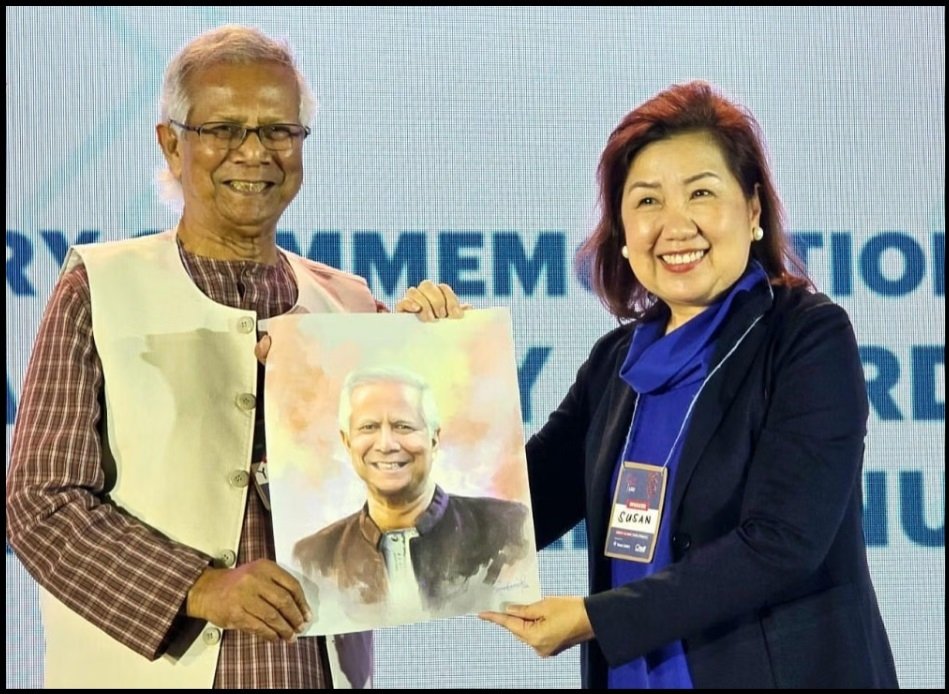
“র্যামন ম্যাগসাইসাই” পুরস্কার প্রাপ্তির ৪০তম বার্ষিকী উপলক্ষে প্রফেসর মুহাম্মদ ইউনূসকে ম্যানিলায় সম্মাননা প্রদান

Social Business Academia Dialogue & 3ZERO Club Convention 2024 held in Manila, Philippines
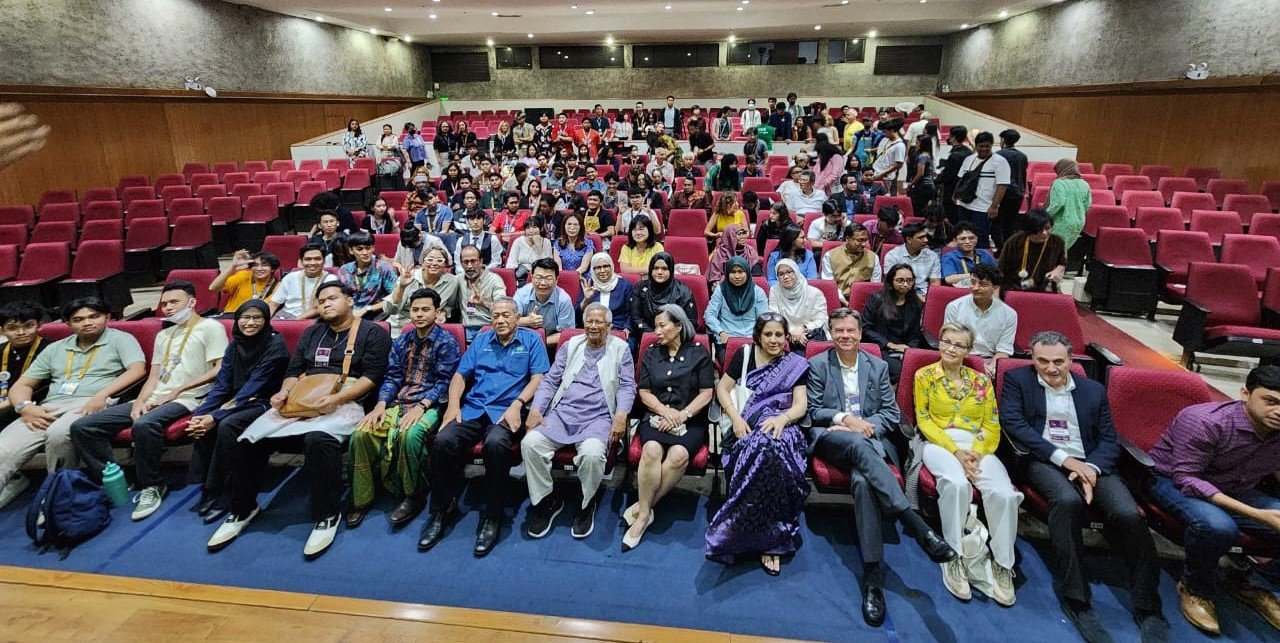
The 14th Social Business Day concludes in Manila, Philippines
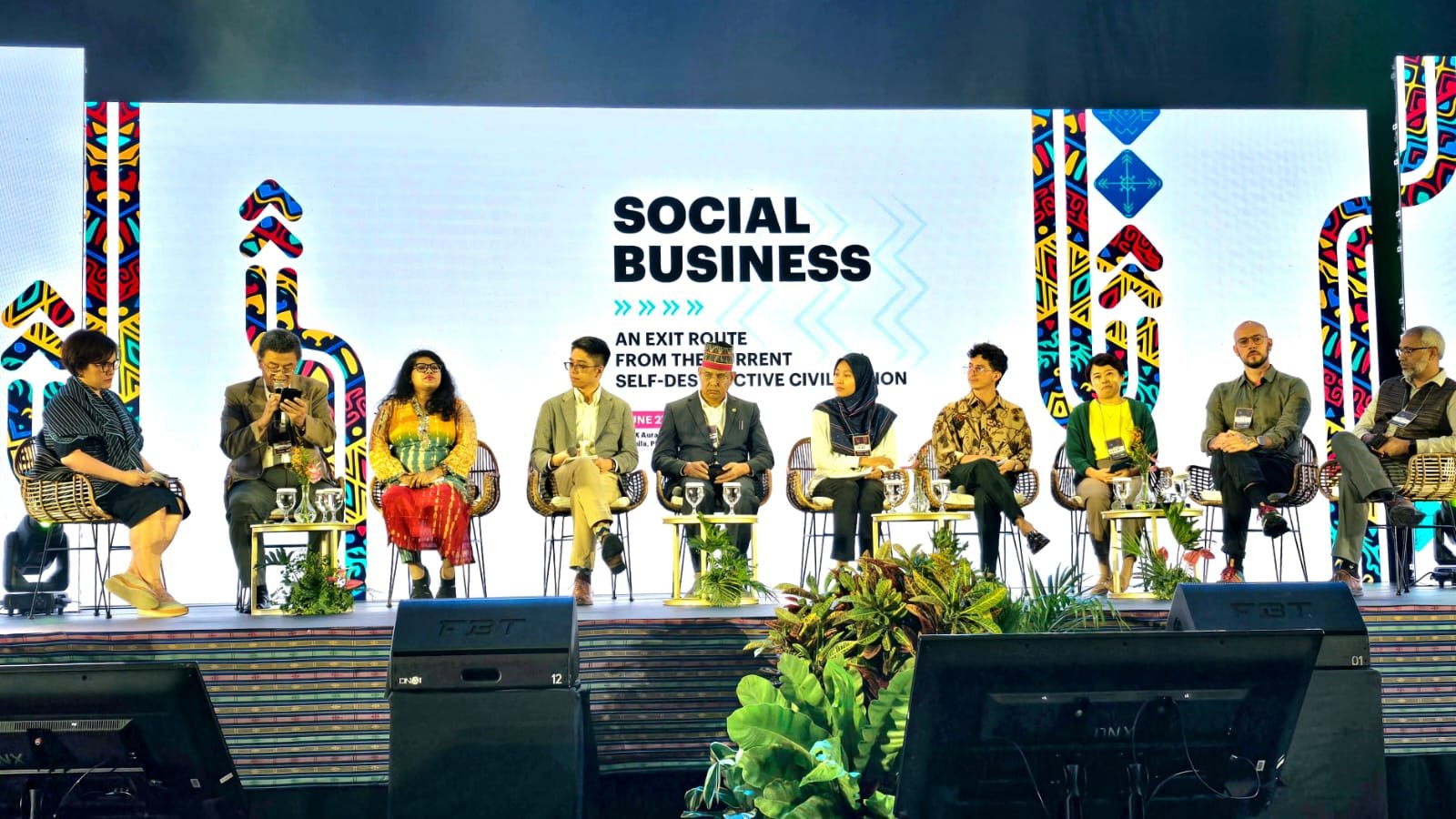
The 14th Social Business Day 2024 kicks off in Manila, Philippines

